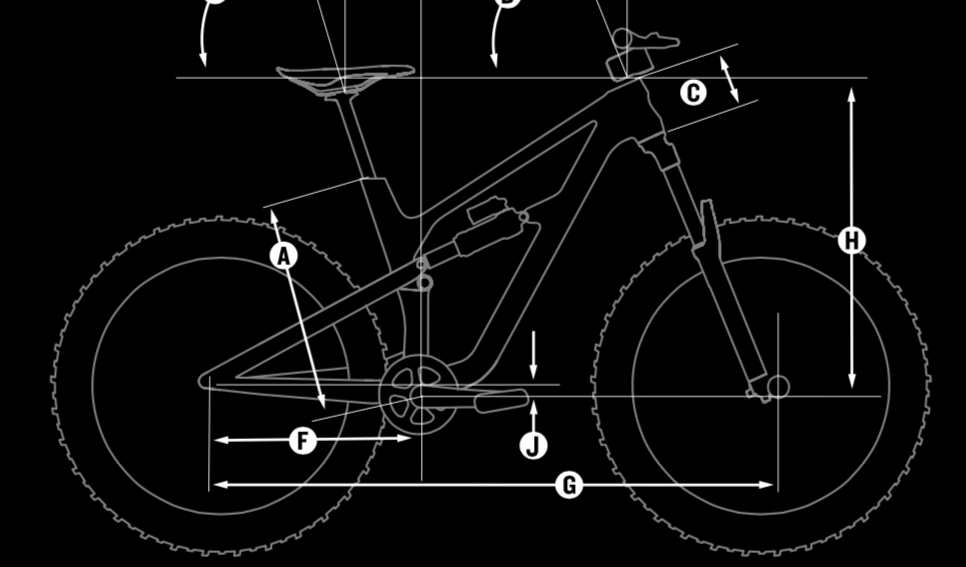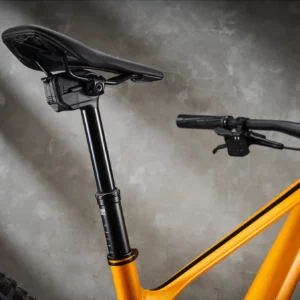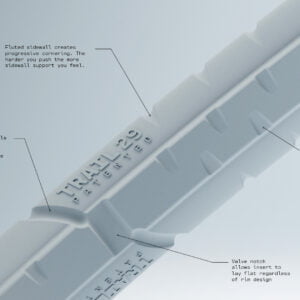Here at EverydayMTB we tend to focus on getting the most bang for your buck out of your riding equipment. What might be counter-intuitive to some then, is that this makes me even more critical of bike geometry. Why? I’ll explain below.
The concept of a “Mountain Bike Maker” is largely a misnomer. Even the largest players in the market, Specialized, Trek, Giant etc don’t make many of the key components on their bikes. Shocks, brakes and drivetrains all are sourced from other manufacturers even if in house touch points, wheels and tires are used. And for most smaller brands almost everything except for the frame is sourced from other manufacturers.
So what really is the difference between buying a Specialized, a Diamondback, a Transition or a Santa Cruz? Here are the main things I think you’re paying for:
- Warranty and Customer Service
- Suspension Linkage Engineering
- Materials Technology
- Frame Geometry
Each of these items are a way bike brands can differentiate their brands. SRAM GX Eagle is going to shift the same on every bike but a suspension linkage will make the bike climb in that massive Eagle gear significantly differently.
That last item on that list is what this article is all about. Bike brands do get to determine the geometry of their bikes. That geometry is one of the few ways that brands get to set themselves apart. For this reason, we’ll always call out a bike with geometry that is not well sorted out and on the flip side, we’ll get excited about any bike that is doing good things with the geometry of their frameset.
The interesting thing to me when reviewing bikes is that geometry is relatively “free”. It does take engineering work, but making a 69 degree head tube does not cost less than a 65 degree head tube angle. This is why it always gives us pause when a bike has geometry that doesn’t seem to make sense or degrades the ride characteristics of the bike.
A recent example of this, and what I suspect sometimes happens with bike brands, was our review of the Diamondback Release 29 2. This bike I suspect was a repurposed design from a 27.5 plus bike that has been in Diamondback’s lineup for a while, The Catch.
The result is that it appears that Diamondback didn’t put in the work to get the geo right on this new bike. What does this mean in practice? Here are a few comparisons with the YT Jeffsey, Kona Process 134 and StumpJumper Alloy. All of these bikes are representative of the burlier end of trail bikes just like the Release 29.
| Diamondback Release 29 | YT Jeffsey | Kona Process 134 | StumpJumper Alloy | |
| Reach | 427 | 450 | 450 | 450 |
| Head Tube Angle | 67.7 | 66 | 66 | 65 |
| Seat Tube Angle | 73 | 77 | 76.5 | 77.9 |
It’s pretty easy to see that the engineers at YT, Kona and Specialized are all on a different path than Diamondback here. From riding both types of bikes I’ll tell you that the YT, Kona and Specialized bikes make more sense to me out on the trail.
Also, it’s important note that all three of those other bikes come in at similar price-points to the Diamondback. This is, the point I want to get home. Geometry is free. You shouldn’t have to compromise on good geometry to hit a price-point and I wouldn’t trust any brand that says that you do.





